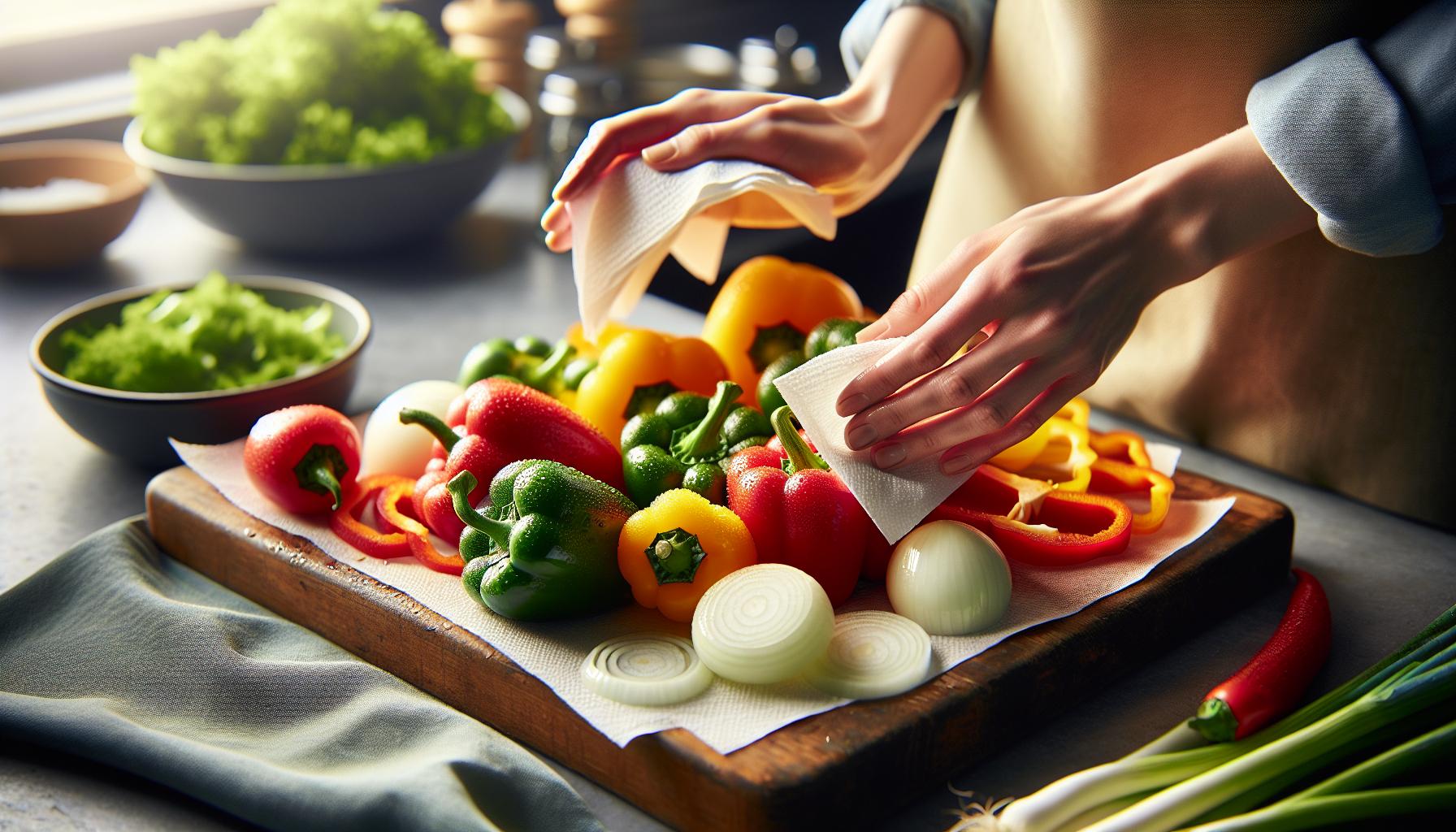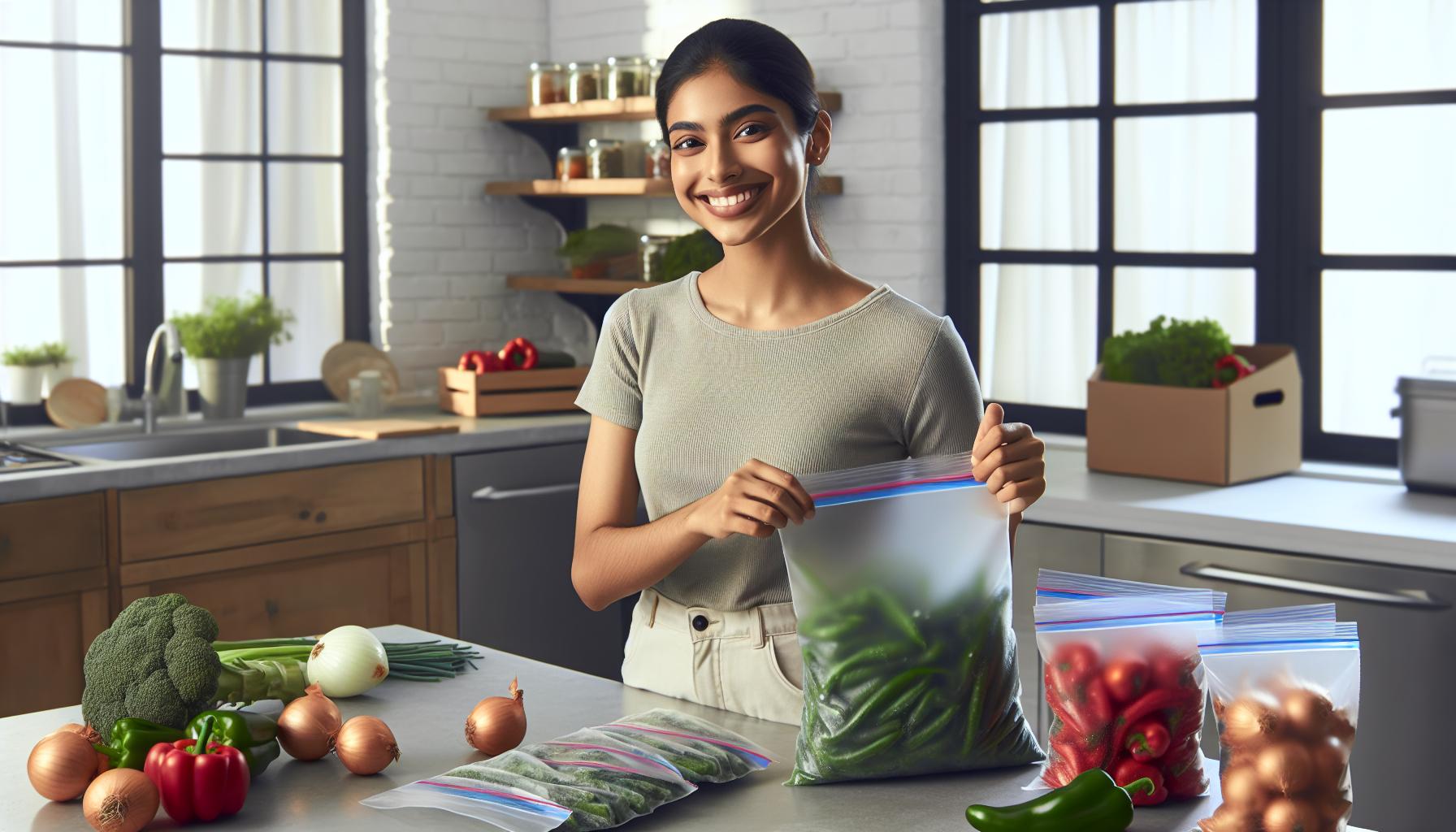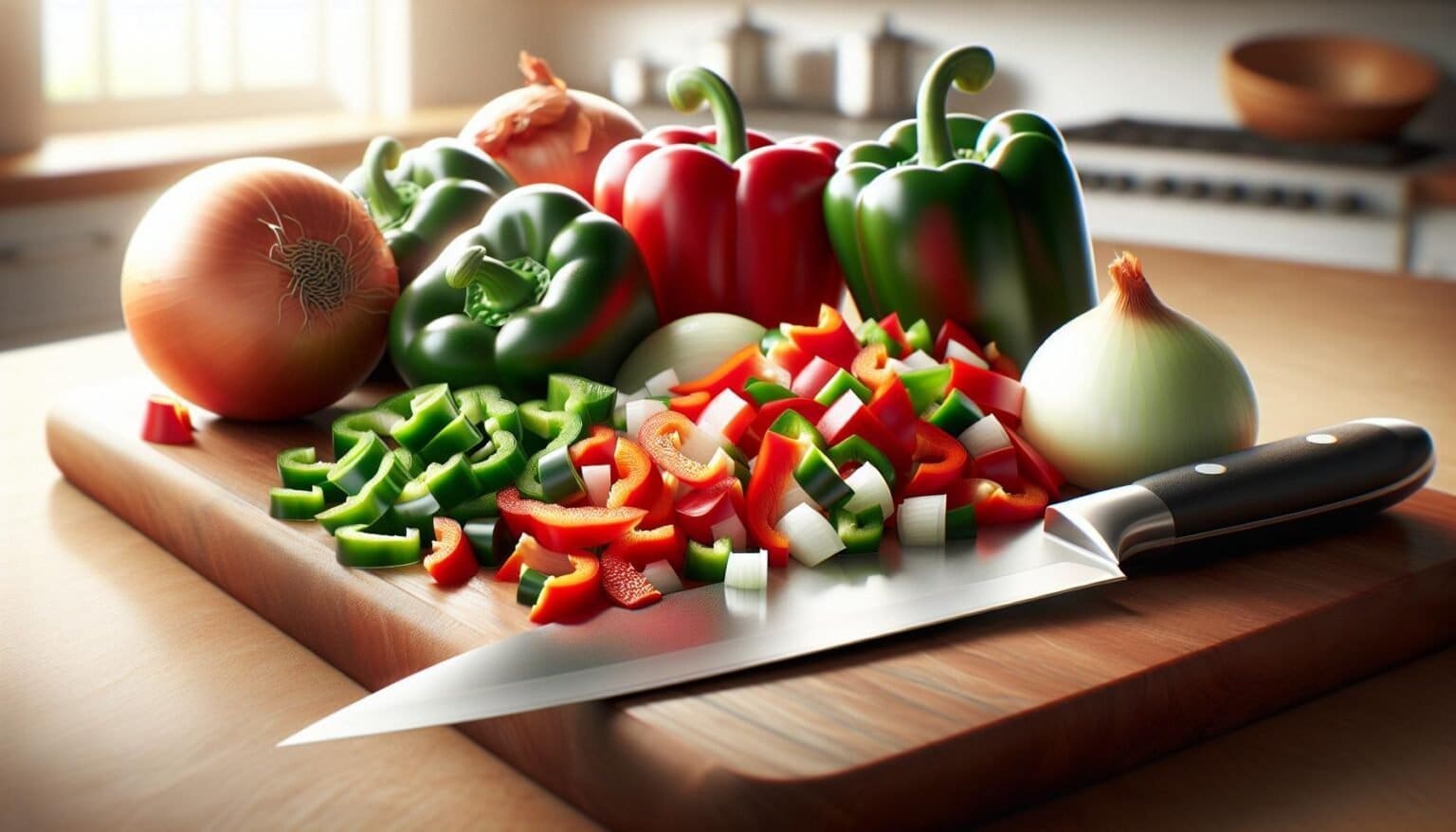Freezing fresh peppers and onions remains one of the smartest ways to preserve these kitchen staples for year-round cooking. These vegetables maintain their flavor and nutritional value when properly frozen making them perfect for quick meal prep soups stews and stir-fries.
The process of freezing peppers and onions involves washing cutting flash freezing and storing them in airtight containers. When done correctly these vegetables can last up to 12 months in the freezer while retaining their taste texture and nutrients.
Mastering the art of freezing these versatile vegetables eliminates waste saves money and ensures a ready supply of pre-cut ingredients for busy weeknight meals. From choosing the freshest produce to proper storage techniques this guide will walk through every step needed to successfully freeze peppers and onions for long-term use.
“1. Clean and chop vegetables
Clean the peppers by rinsing them under cold water to remove dirt debris. Cut off the tops remove the seeds core the inner white membrane. Slice the peppers into uniform strips or dice them into even-sized pieces based on your cooking needs.
For onions, peel off the outer papery skin rinse briefly under cold water. Cut off the top end while keeping the root end intact to reduce tear-inducing compounds. Slice the onions into uniform rings strips or dice them into consistent pieces.
Tips for chopping:
- Use a sharp knife for clean precise cuts
- Make pieces approximately 1/2 inch in size for even freezing
- Keep cut sizes consistent for uniform cooking later
- Remove any damaged or discolored spots
| Vegetable | Cut Size Options | Special Notes |
|---|---|---|
| Peppers | Strips: 1/2″ wide Dice: 1/2″ cubes | Remove seeds membranes |
| Onions | Rings: 1/4″ thick Dice: 1/2″ pieces | Keep root intact while cutting |
Pat both vegetables dry with paper towels before moving to the freezing step. This removes excess moisture prevents ice crystals from forming during the freezing process.
2. Remove seeds from peppers

Removing seeds from peppers creates a cleaner cut and better texture for freezing. Start by cutting off the top stem and bottom of each pepper. Slice the pepper in half lengthwise to expose the core. Pull out the white membrane and attached seeds in one swift motion, or use a small metal spoon to scrape along the inside walls.
For stubborn seeds:
- Score around the stem with a paring knife
- Gently twist to release the core
- Remove remaining seeds with a quick tap
- Scrape out any lingering white ribs
This process works for all pepper varieties:
- Bell peppers
- Sweet peppers
- Hot peppers
Note: When handling hot peppers, wear food-safe gloves to protect hands from capsaicin burns. Keep hands away from eyes during the seeding process.
The cleaned peppers now have a smooth interior surface, ready for cutting into your preferred shape for freezing. A thorough seed removal prevents unwanted texture changes in frozen dishes.
3. Dry thoroughly

Proper drying prevents ice crystals from forming on peppers and onions during freezing. Pat the cut vegetables with clean paper towels or kitchen towels until completely dry. For optimal results, spread the pieces on a layer of paper towels and allow them to air dry for 15-20 minutes.
A salad spinner removes excess moisture effectively from pepper strips and diced onions. Place small batches in the spinner and give it 3-4 quick spins. Transfer the dried vegetables to fresh paper towels before freezing.
Key drying tips:
- Shake excess water from peppers vigorously after washing
- Blot onion pieces gently to avoid separating layers
- Use lint-free towels to prevent debris on vegetables
- Check creases and cut edges for hidden moisture
- Allow air circulation between pieces while drying
Proper drying significantly impacts freezing success – rushing this step leads to clumpy frozen vegetables with compromised texture.
4. Pack in freezer bags

Flash-frozen peppers and onions transfer easily into freezer bags for long-term storage. Label each bag with the contents date using a permanent marker before filling. Remove excess air from the bags by pressing gently or using a straw to create a vacuum seal.
Here’s the optimal packing process:
- Fill freezer bags 3/4 full to allow room for expansion
- Press out air pockets while sealing to prevent freezer burn
- Double-bag if storing longer than 6 months
- Store bags flat until frozen to save space
- Pack in meal-sized portions (2-3 cups per bag) for easy cooking
- Use heavy-duty freezer bags rated for 0°F/-18°C
- Write cooking instructions on bags for quick reference
- Stack bags horizontally after they’re completely frozen
The properly packed vegetables maintain freshness for 10-12 months in a standard freezer at 0°F/-18°C. Small portions thaw faster than large ones making them ideal for quick meal preparation.
5. Remove air and freeze”
Remove all air from the freezer bags using a straw or vacuum sealer to prevent freezer burn. Press gently from the bottom of the bag upward to push out excess air. A vacuum sealer creates an airtight seal that extends storage life to 12 months.
Label each bag with:
- Type of vegetables
- Date of freezing
- Portion size
- Best-by date (12 months from freezing)
Place bags flat in the freezer with space between them for proper air circulation. Once frozen solid (approximately 24 hours), stack the bags vertically or horizontally to maximize freezer space. Keep temperature at 0°F/-18°C for optimal preservation.
- Fill bags 3/4 full to allow for expansion
- Double-bag for storage over 6 months
- Store similar portions together
- Place newer bags behind older ones
- Keep away from freezer door to maintain temperature



